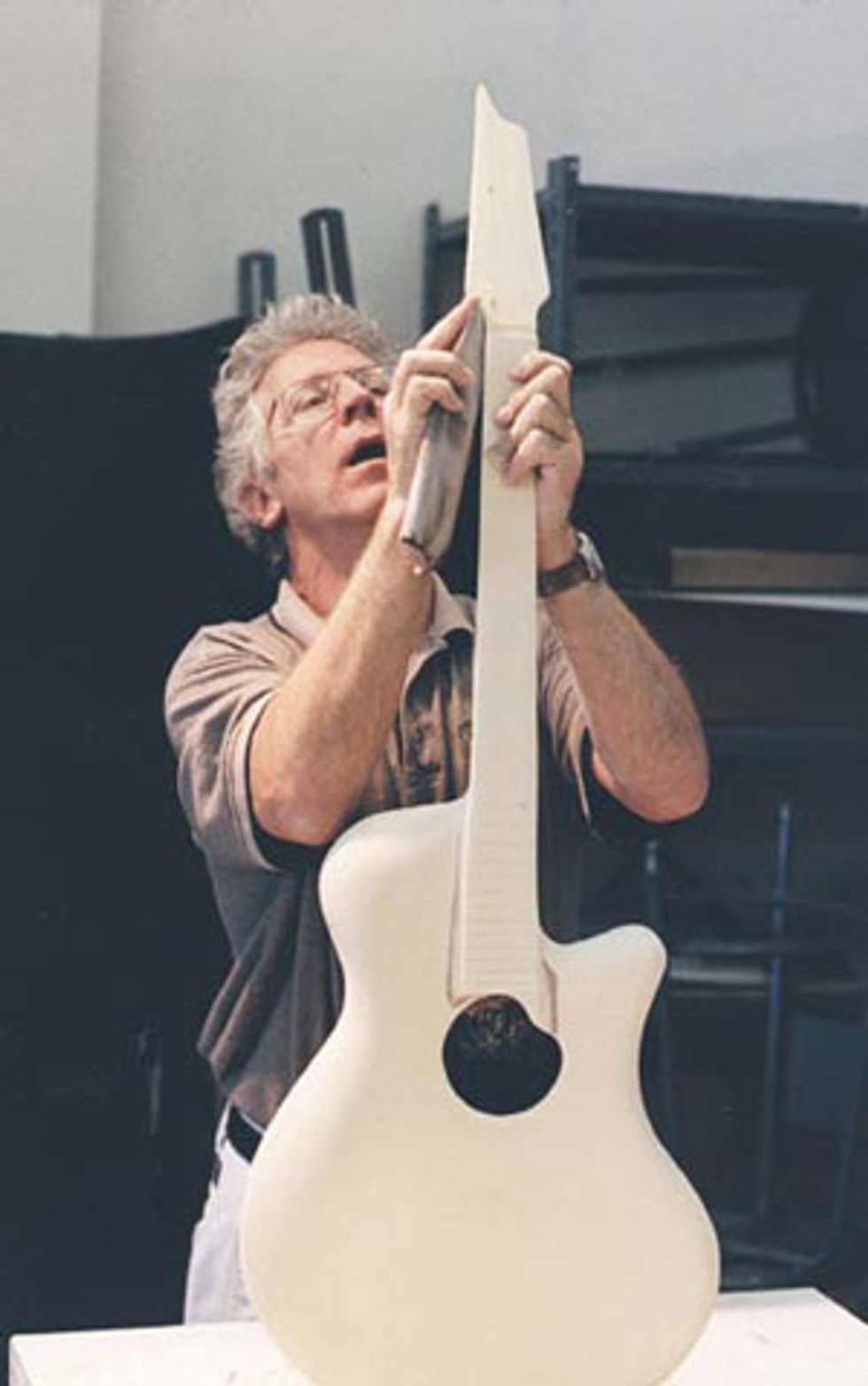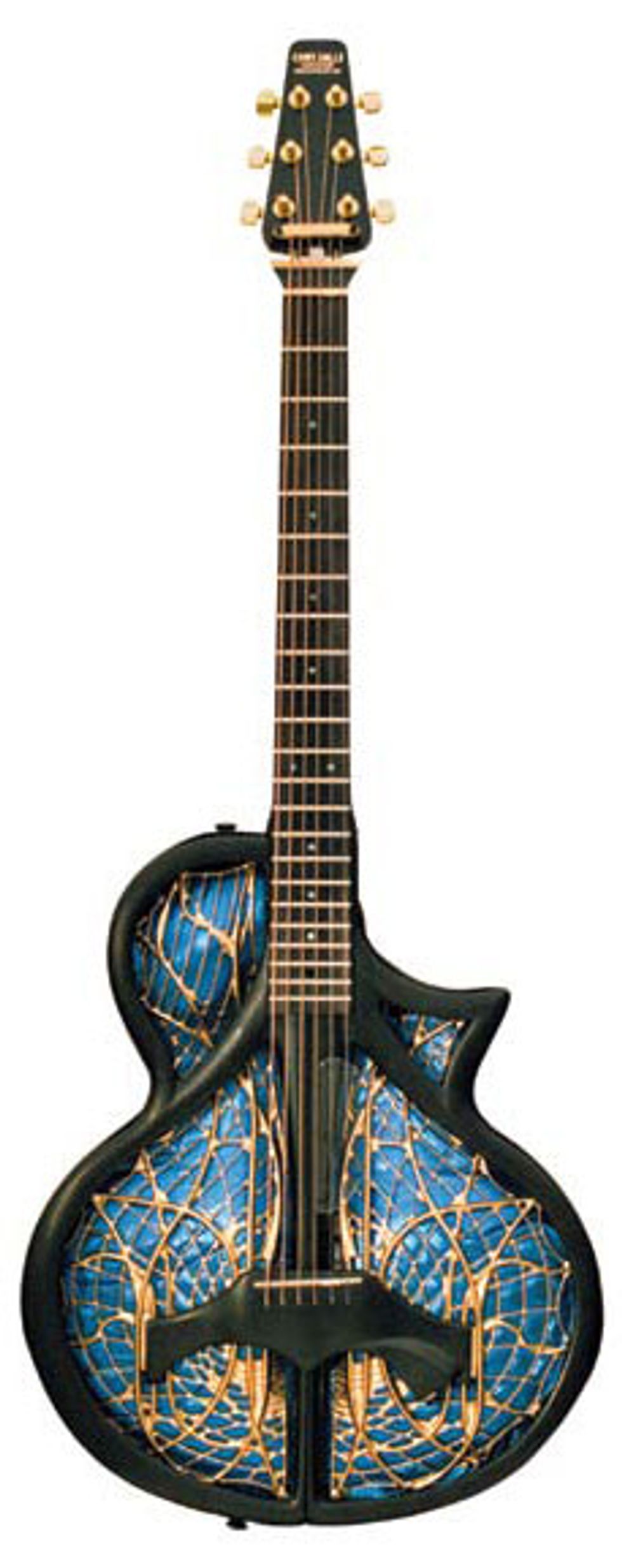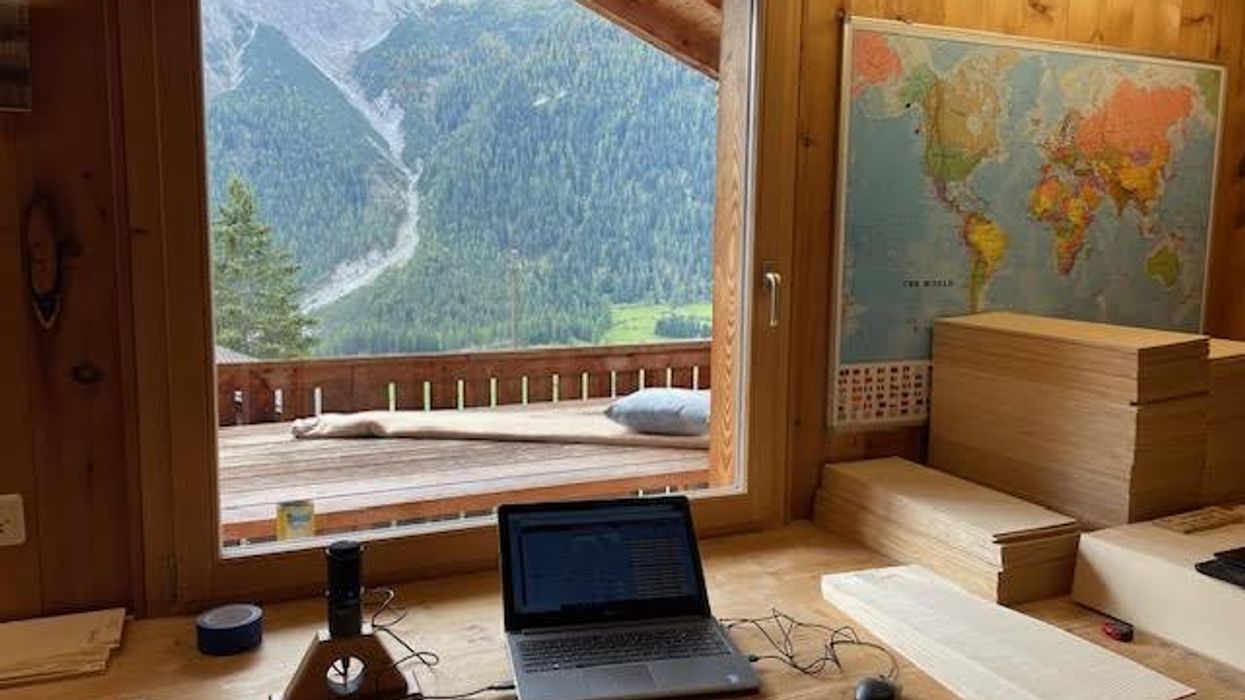 Dick Boak at work on a hard foam prototype, 2002. |
But aside from wood, there are many alternatives for instrument makers. Guitars have been made with reasonable success out of graphite, high-pressure laminate, masonite, cardboard, plastic, fiberglass, aluminum, steel, ceramic, and even solid granite—for hard rock music, I suppose. I’d like to share a few of my particular probable and improbable ideas concerning the future of guitars.
In my younger days, I held a balloon to my ear while music was playing and was startled to hear an enhancement to the sound, apparently influenced by either the balloon’s membrane or the specific gaseous contents. Concurrently, my friend and fellow guitar enthusiast Tim White had an idea about making a guitar with a graphite web for a body, filled with an inflatable bladder. After considerable discussion, I commissioned a prototype, and months later he delivered a monstrously ugly, albeit brilliant, first effort. It was heavy though, and the inflatable bladder was concocted from a Kmart shopping bag. I was slightly disappointed, but Tim kindly agreed to let me off the hook. He did, however, continue to evolve the inflatable guitar concept under the moniker of “Chrysalis,” producing some fascinating, remarkably beautiful and innovative guitars. This idea is way ahead of its time: chrysalisguitar.com.
 Chrysalis Guitar, courtesy of Tim White. |
It’s obvious that a much better approach is die injection plastic. The specific gravity of Brazilian rosewood (or any wood for that matter) can be closely approximated by adding or subtracting glass content to plastic pellets, and the injection-mold process allows for exact replicas at a low cost per piece. The legendary Mario Maccaferri did considerable early work in this area. The barrier here is that the machinery is gargantuan and the actual molds can cost in excess of $100,000 to fabricate, so there is no room for error or adjustment. Unless you have unlimited resources, you have to get it right the first time. Nonetheless, I took a stab a creating a hard foam model of such a “contiguous” guitar, and I do believe that someone will carry the idea to successful fruition sometime in the next 500 years!
dick boak
Prior to, and during the course of, his 33-year career with C. F. Martin & Co., dick boak (small letters!) has been a vagabond, communal architect, illustrator, art teacher, geodesic dome builder, lathe turner, luthier, draftsman, poet, guitarist, wood expert, author, desktop publisher, singer/songwriter, apple computer geek, archivist and publisher. By the time you finish reading this paragraph, he will most likely have morphed into something else.









![Devon Eisenbarger [Katy Perry] Rig Rundown](https://www.premierguitar.com/media-library/youtube.jpg?id=61774583&width=1245&height=700&quality=70&coordinates=0%2C0%2C0%2C0)




